Princess Diana: Looking back at the monarchy's worst week in living memory
The sudden and shocking death of Princess Diana brought the world to a standstill in 1997 – but, in Britain, her passing also shone a light on a darker side of the monarchy. Sean O’Grady takes a look at the ‘mob grief’ that has consumed the public since and how it came to remind those in power that they are only there by consent of the people
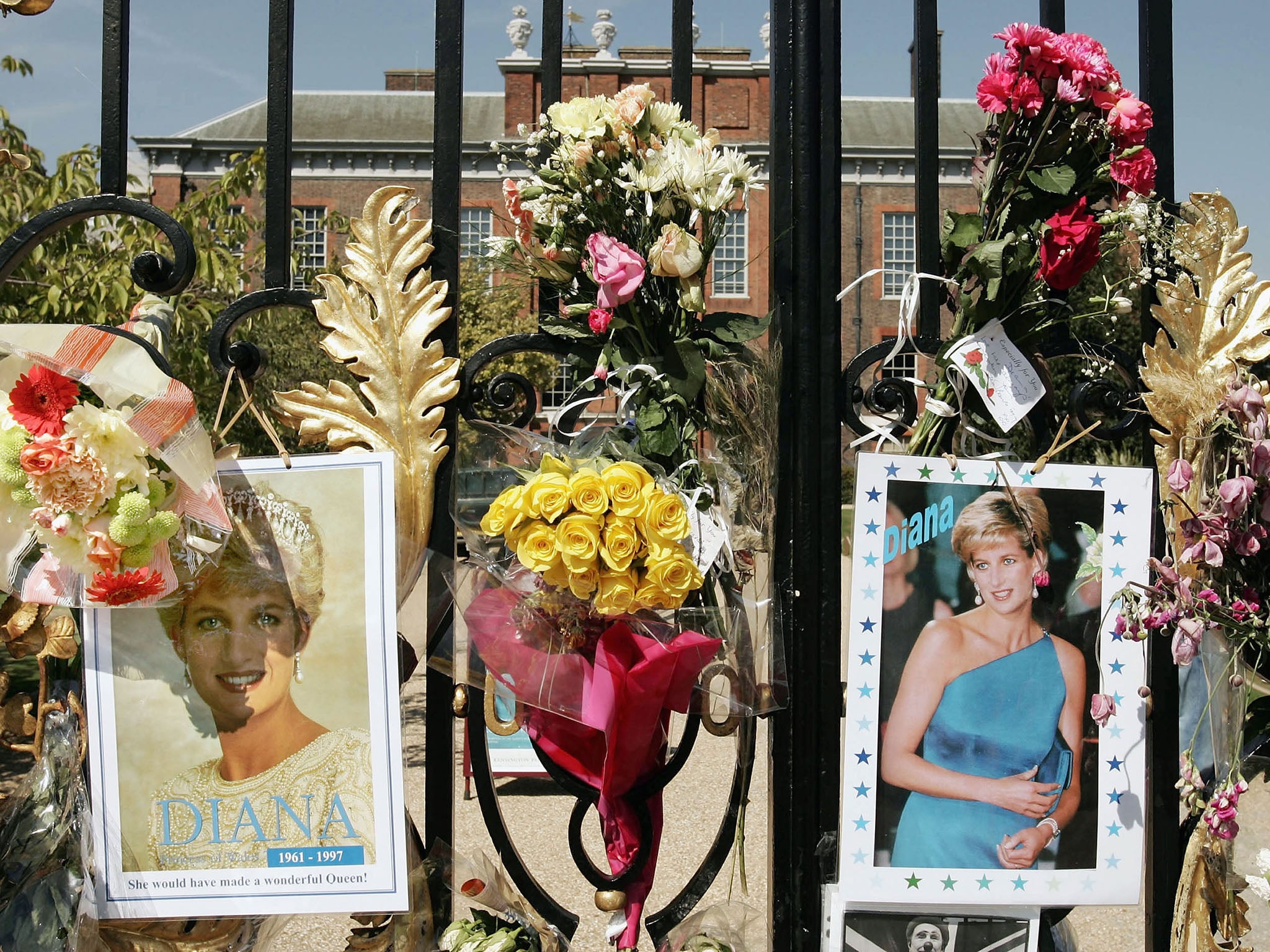
Your support helps us to tell the story
From reproductive rights to climate change to Big Tech, The Independent is on the ground when the story is developing. Whether it's investigating the financials of Elon Musk's pro-Trump PAC or producing our latest documentary, 'The A Word', which shines a light on the American women fighting for reproductive rights, we know how important it is to parse out the facts from the messaging.
At such a critical moment in US history, we need reporters on the ground. Your donation allows us to keep sending journalists to speak to both sides of the story.
The Independent is trusted by Americans across the entire political spectrum. And unlike many other quality news outlets, we choose not to lock Americans out of our reporting and analysis with paywalls. We believe quality journalism should be available to everyone, paid for by those who can afford it.
Your support makes all the difference.Twenty years ago Britain went mad. Or at least sizeable sections of it did. An exaggeration, literally untrue? Well, in the weeks following her death and funeral the British rates of suicide and self-harming jumped, and for no other apparent reason than the blanket coverage of Diana’s unhappy marriage, reported suicide attempts, self-harm and eating disorders.
Millions of people who had never met Diana, but had seen her pour her heart out in books and TV interviews, mourned publicly, loudly and emotionally in a way that was quite unprecedented: this was mass hysteria on a scale rarely, if ever, witnessed. The Scottish paper the Sunday Mail said in half-declaration, half-incitement: “Her death diminishes us all. It leaves us paralysed and giddy with grief”.
In due course a million people would line the route of her funeral cortège. Some of this I saw myself at the time; I used to drive most mornings to work past the front of Kensington Palace and witnessed the ocean of flowers and tributes building so dramatically, and strangers embracing each other.
Sometimes I’d stop and have a look at the messages and cards, so sweet and touching. I wondered to myself then, and now, whether they might be so uncontrolled and upset about a parent or sibling of their own who’d passed on. Those of us around at the time cannot forget it, and must bear witness of those strange days to those now in their thirties or under who’ll have no memory of it. This was when all the main TV channels devoted themselves to blanket rolling news and obliterated the usual programming; if you’re about 24 years old the chances are your own quoted reaction was “why aren’t Teletubbies on?”.
When George VI died in 1952, or Winston Churchill in 1965 people shed a tear, stood in silence for the minute’s silence, and queued to pay their respects to the catafalque at Westminster Hall. But there was nothing before like the reaction to the death of Diana. Such events are usually exaggerated in importance during their own time and have little lasting legacy, (eg the 2012 Olympics or the Millennium Dome), but in terms of the emotional condition of the British people, 1997 was definitely a turning point. Detractors called it “sentimentalism” or “emotionalism”, and there was an essay by the philosophy professor Anthony O’Hear attacking “mob grief” and “the elevation of feeling over reason, self-expression over discipline, self esteem over objective duty”.
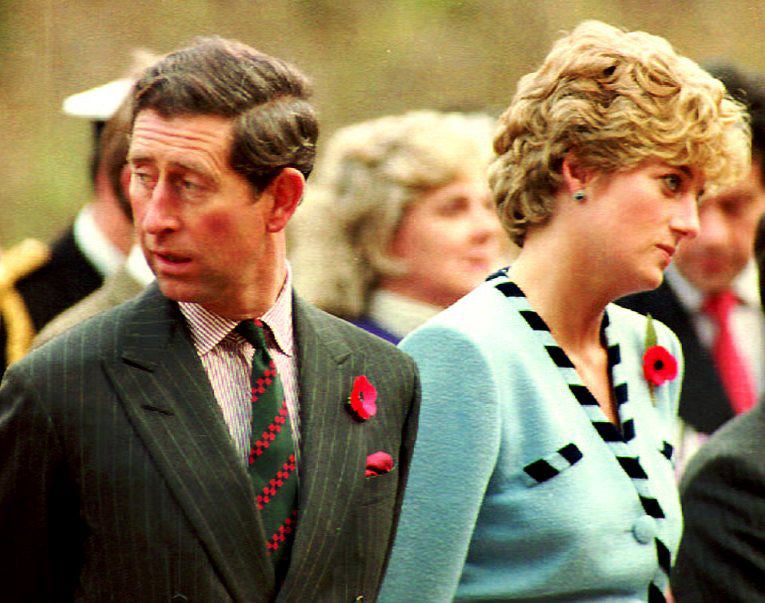
Maybe, but it was here to stay, and we have more of it in the 21st century than we had before, and you see it everywhere from the whooping and yelling on TV talent and audience shows from Jeremy Kyle to X Factor, and in numbers of people making pilgrimages to the scenes of major terror attacks. In smaller ways we notice it those makeshift roadside memorials to deaths on the road and the white “ghost bikes” left where cyclists get killed. It may even have invaded our politics. When they buried Diana they buried what was left of the British stiff upper lip and deference to the ruling classes and their institutions.
In the first week of September 1997 it was as if the British had suddenly been relieved of a traditional reticence, respect and restraint, and gave way to the Diana doctrine of love and hugs and tears. It was also a week in which the very legitimacy of the monarchy was democratically challenged, and when the public first looked seriously at the bad practices of the British press, both institutions long overdue for attention. Earl Spencer’s first reaction to his sister’s death was visceral and utterly correct: “I always believed the press would kill her in the end. But not even I could imagine that they would take such a direct hand in her death as seems to be the case.” At her funeral he also condemned how Diana, mythical classical huntress, became the hunted. Those were days when photographers and reporters around the crowds at Buckingham Palace and Kensington Palace would be rounded on and jostled by the public – “you’re all to blame”; “have some respect”. One poem left by an anonymous member of the public did reveal some unusual self awareness:
“I killed her. I hounded her to death. I followed her every movement/
I gave her no peace. For I bought the papers. I read the stories and/
I looked at the photographs/
They did this for me/
How can I live with that?”
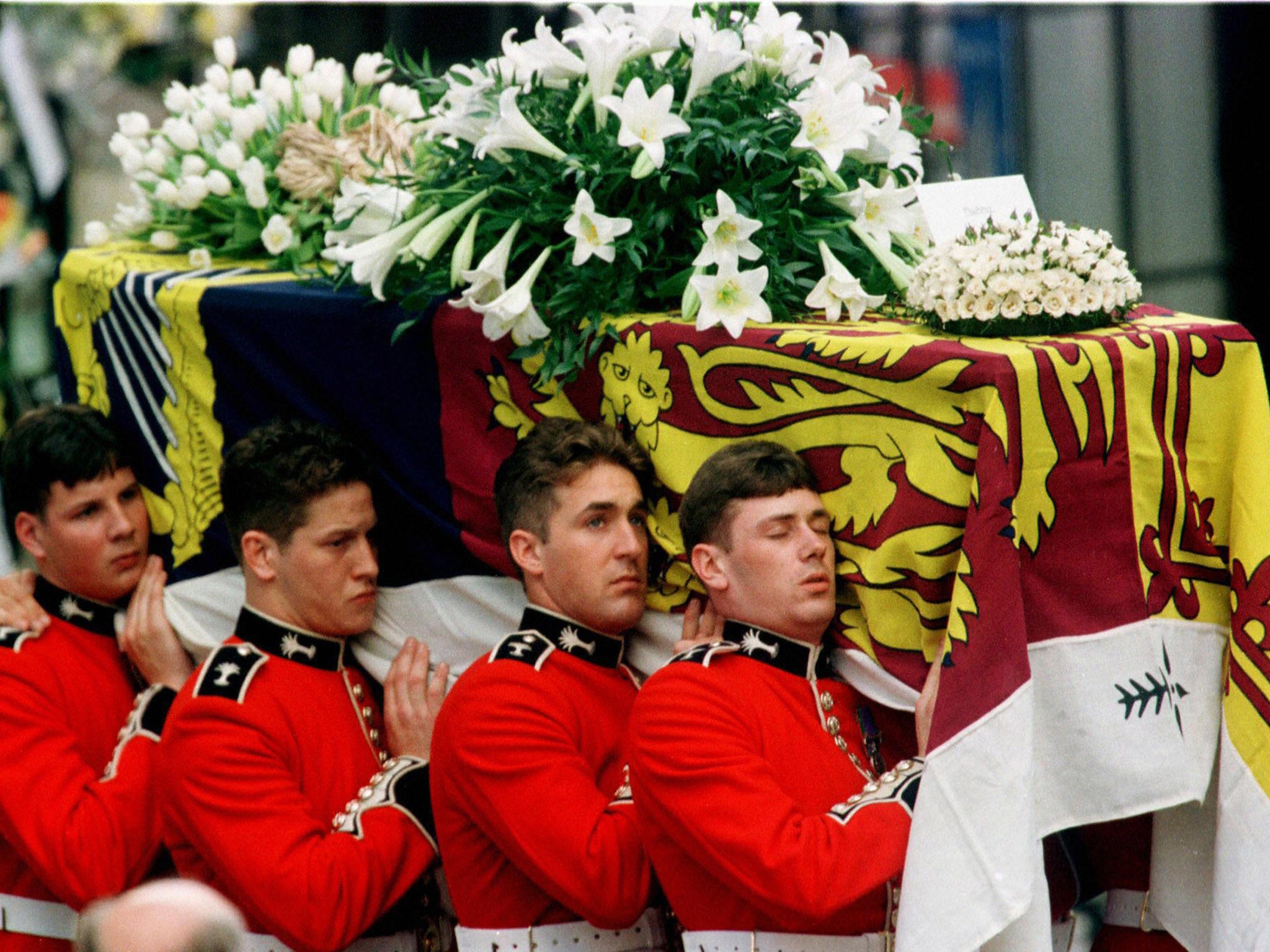
Not everyone went mad of course. For many, the death of Diana wasn’t an immediate provocation to break down emotionally and turn on the House of Windsor. Though famous and in some ways privileged, the way the veteran socialist politician Tony Benn heard the news early on that Sunday morning was typical. Far away from the Establishment no one called him to drag him out of bed on that bank holiday weekend. Here is what he recorded in his Diaries:
“Turned on the seven o’clock news and I heard, ‘This is BBC Radio 4, Radio 5 Live, Radio 2 and 3. Diana, Princess of Wales, has been killed in a car crash in Paris this morning.’ She and Dodi and a bodyguard and a chauffeur were driving a Mercedes through a tunnel in Paris followed by five paparazzi on motorbikes and they hit a wall...
From then – five hours ago – there has been nothing but that on the radio, everybody has been interviewed: the Prime Minister, John Major, William Hague, David Mellor, Chris Smith, the Archbishop of Canterbury, the Chief Rabbi, the Moderator of the Christian Church in Northern Ireland. It’s just blanket coverage. It is a very sad story – the Marilyn Monroe story – of a beautiful woman who had lots of lovers and never found happiness. Hardly any reference to Al Fayed, whose eldest son was killed, and no mention of the name of the chauffeur. Don’t chauffeurs have names, don’t they have families?
I refused requests to be interviewed because there is nothing whatever to be said really. ”
Not for the first or last time Mr Benn was only partly right. A great deal was being said very quickly about the way the media had behaved and even more about how the royal family was behaving (and the name of the drunk driver, Henri Paul was soon to familiar).
This was the age of the Labour spin doctors, and in one of their favourite phrases a dangerous “narrative” was emerging. On the one hand was the memory of the people’s princess, a woman many thought had been treated cruelly by the House of Windsor, and especially by the adulterous and selfish Prince Charles, who had used her as a brood mare. Here, on Diana’s side, were to be found the wailing masses leaving flowers and teddies and bottles of wine and candles at various imperious royal gates, an increasingly hyper-critical tabloid press acting as their voice of anguish and anger. On the other, in the emerging crude division of a nation, we found the hidebound royal family and their flunkeys, who allegedly showed little if any signs of grief, said nothing about this massive news story and seemed determined to remain up at remote Balmoral (remote emotionally and symbolically as well as geographically), rather than to come to London and empathise – maybe hug, Di style – with those grieving. The behaviour reminded some – unfairly in all cases – of the bitter comment Edward VIII once made of his mother, Queen Mary having “icy cold veins”.
Their first public appearance was only hours after the news broke, at the usual Sunday morning service at Craithie Kirk near Balmoral. It was royal business as usual – Rolls-Royces, Range Rovers and the elder male royals done out in tartan kilts and tweeds, basically fancy dress and verging on self-parody. They did not at that moment look to be in touch with the British people. There was no comment to the despised media at any rate. The Spice Girls would have made a better job of the PR.
The public was confused and disappointed. By the Wednesday the combination of rolling intense media coverage and public reaction – to a degree fuelling and feeding each other – was combusting into an uglier mood. That was the morning, 3 September, a few short days after the accident, that the press turned nasty. In banner headlines, they “spoke” for the people, or a section of them, to the head of state and royal family as they had never been spoken to in modern times, and by papers usually sycophantically loyal:
The Sun; “Where is Our Queen? Where is Her Flag?”
The Mirror; “Your People are Suffering. Speak to us Ma’am.”
The Express; “Show us You Care.”
Daily Mail; “Let them Flag Fly at Half Mast.”
It was all sickeningly hypocritical, dodging their own role in killing her, but their shamelessness was nothing new, and they persisted with it, and could do so because they had the public behind them (equally hypocritically). But it was quite something to see such a phenomenon.
Indeed the arcane niceties of the protocol of the royal standard became an improbable motivator of mutinous thinking in the Mail editorial conference. The rule was that the flag with the royal arms always flies when the monarch is present. When not present then the flag doesn’t fly at all. It cannot fly at half mast because there is always a monarch. Ergo no royal standard at half mast at Buckingham Palace or anywhere else. Sorry. Soon, though, the Union Flag was run up to be blow around at half mast on Windsor Castle, a case of too little too late.
We may never know the full truth about what was happening in royal circles that week. A few things do seem clear, however. No doubt their father and grandmother wished to protect William and Harry. They actually said as much. Royal spokesman Geoffrey Crawford attempted to explain: “the princess was a much- loved national figure, but she was also a mother whose sons miss her deeply. Prince William and Prince Harry themselves want to be with their father and grandparents at this time in the quiet haven of Balmoral. As their grandmother, the Queen is helping the princes to come to terms with their loss as they prepare themselves for the public ordeal of mourning their mother with the nation on Saturday”.
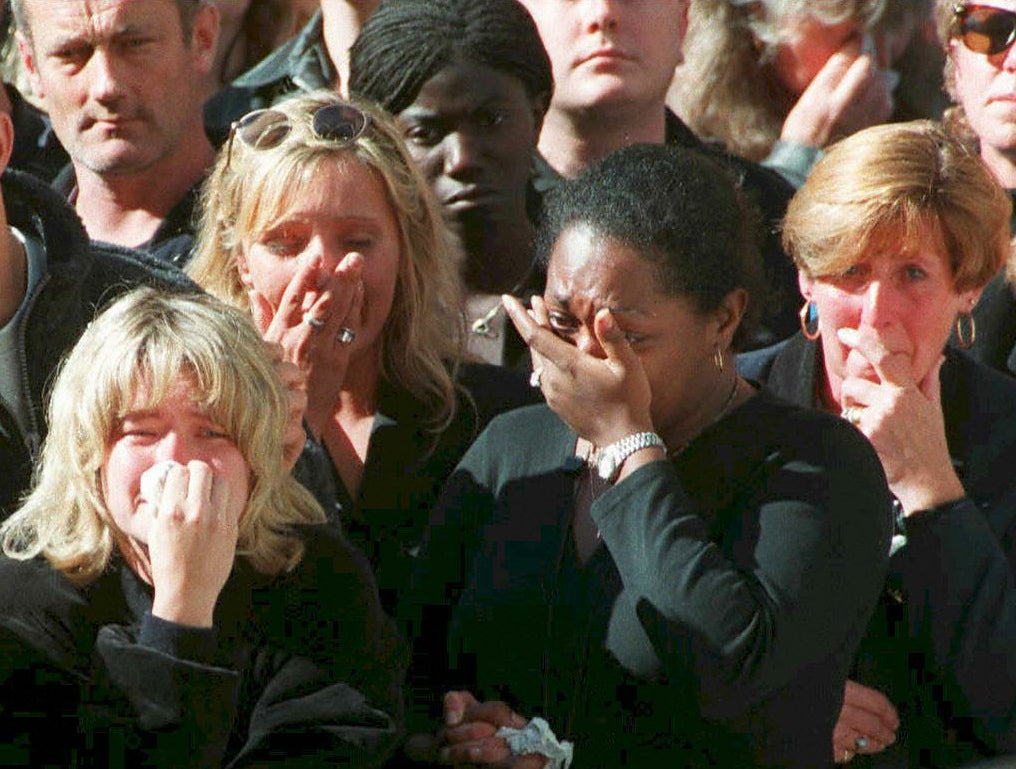
Sincere as it was, it did not satisfy the public. The conflict between private individuals – children – dealing with bereavement and royals as public property playing out a soap opera televised role demanded by their supposed subjects and scripted by the newspapers couldn’t be more dramatic, or painful. Even two decades on it reverberates, as when Prince Harry said candidly lately that he didn’t think it right for any child to be made to walk behind their mum’s coffin. (Though he has now added that it was the right thing to do). So who wanted the young princes to walk behind their mothers coffin? Was it the royals, heartlessly devoted to tradition? Or Tony Blair and his spin doctors pushed along by the press who wanted them to do it to “show they care”, and who Prince Philip told to “fuck off” about it?
Broadly, the Prime Minister and his team, and many in the royal staff worked constructively together over the funeral arrangements. They agreed for example that there should be a proper role for Diana’s brother, Charles Spencer, though there might have been some clumsy attempts to find out how much dynamite he was packing into his speech. They agreed on a big funeral, if not a formal state one, rather than low key family one at Windsor. They shared dismay later when they found out that Earl Spencer had withdrawn six invitations to national newspaper editors on the grounds of taste. Here is how Blairs media chief Alastair Campbell described his first session with Palace officials at the Lord Chamberlains office in the Palace, on Monday 1 September, regarding the funeral:
“It was clear that everyone was already thinking on the same lines, that there must be a mix of tradition and modernity which captured her uniqueness. There was no way they were just going to implement a ‘dusty old plan’. They were clearly desperate to do this right and felt it could be a great healing event...
I stressed the need for a racial mix. I had noticed on the way down how many black people were paying tributes. The crowds were growing by the day.”
Indeed they were, and the lack of royal response was winding them up. They said it with flowers: 10 or 15 tonnes deposited around the various royal palaces and they said it on the new and the web in “discussion groups” as they were quaintly called: “Call me paranoid if you like” ran one, who suggested that land mine manufacturers and the royal family are “none to (sic) happy with Diana interfering with affairs they’d like to be untouched by such a high profile figure”. Fascinating to see the genesis of a conspiracy theory isn’t it?
Campbell comments on the role Blair played and how the Queen felt, partly reflected too in Helen Mirren’s 2006 memorable performance in the film The Queen:
“His role was to give advice, frankly, but in circumstances where the Queen was clearly feeling sorely treated, and that people were not being reasonable. They would be feeling terrible, and there can be few things more terrible than feeling like that but also having your motives questioned. TB said the thing was Diana was a personality who made people feel they knew her when they didn’t, so there were many people out there feeling loss and wanting to blame ...”
There were claims at the time that Blair sought to “milk” the Diana phenomenon and that his “people’s princess” speech on the Sunday was stirring things and politicising her death. If so Blair doesn’t recognise it, writing in his memoirs that “the phrase now seems like something from another age. And corny. And over the top. And all the rest of it. But at the time it felt natural and I thought, particularly, that she would have approved”. At this distance it certainly seems that Blair and Campbell’s advice to the Queen and Court on Wednesday and Thursday to return to London and meet the mourners was wise indeed, and the Palace briefings to that effect helped turn the mood later in the week. More than anything though the Queen’s broadcast on the Friday afternoon, live and heartfelt was the moment that the crown settled more easily on the 71-year-old monarch’s head, and there was a word of explanation or accountability, though not of apology for their absence from London:
“I admired and respected her – for her energy and commitment to others, and especially for her devotion to her two boys. This week at Balmoral, we have all been trying to help William and Harry come to terms with the devastating loss that they and the rest of us have suffered...
I hope that tomorrow we can all, wherever we are, join in expressing our grief at Diana’s loss, and gratitude for her all-too-short life ...
May those who died rest in peace and may we, each and every one of us, thank God for someone who made many, many people happy.”
The funeral with its mix of old and new and it’s greatly extended route was like the Queen’s words the product of hard work by New Labour and Old Monarchy figures. It had its biblical readings and favourite hymns such as “I Vow To Thee My Country”, but also Elton John knocking out a reworked version of “Candle in the Wind”, the second biggest selling single in British history after Bing Crosby’s ”White Christmas” – it sold 1.5 million in its first week and almost 5 million in all. Some 32 million watched the service and the Daimler hearse being bombarded with flowers making its way up the M1 to Diana’s child home home at Althrop in Northamptonshire – with the global audience reportedly 2 billion (compared to 750 million for her wedding with Charles in 1981, and a mere 3.7 million for Charles marriage to Camilla in 2010, which his mum didn’t turn up to).
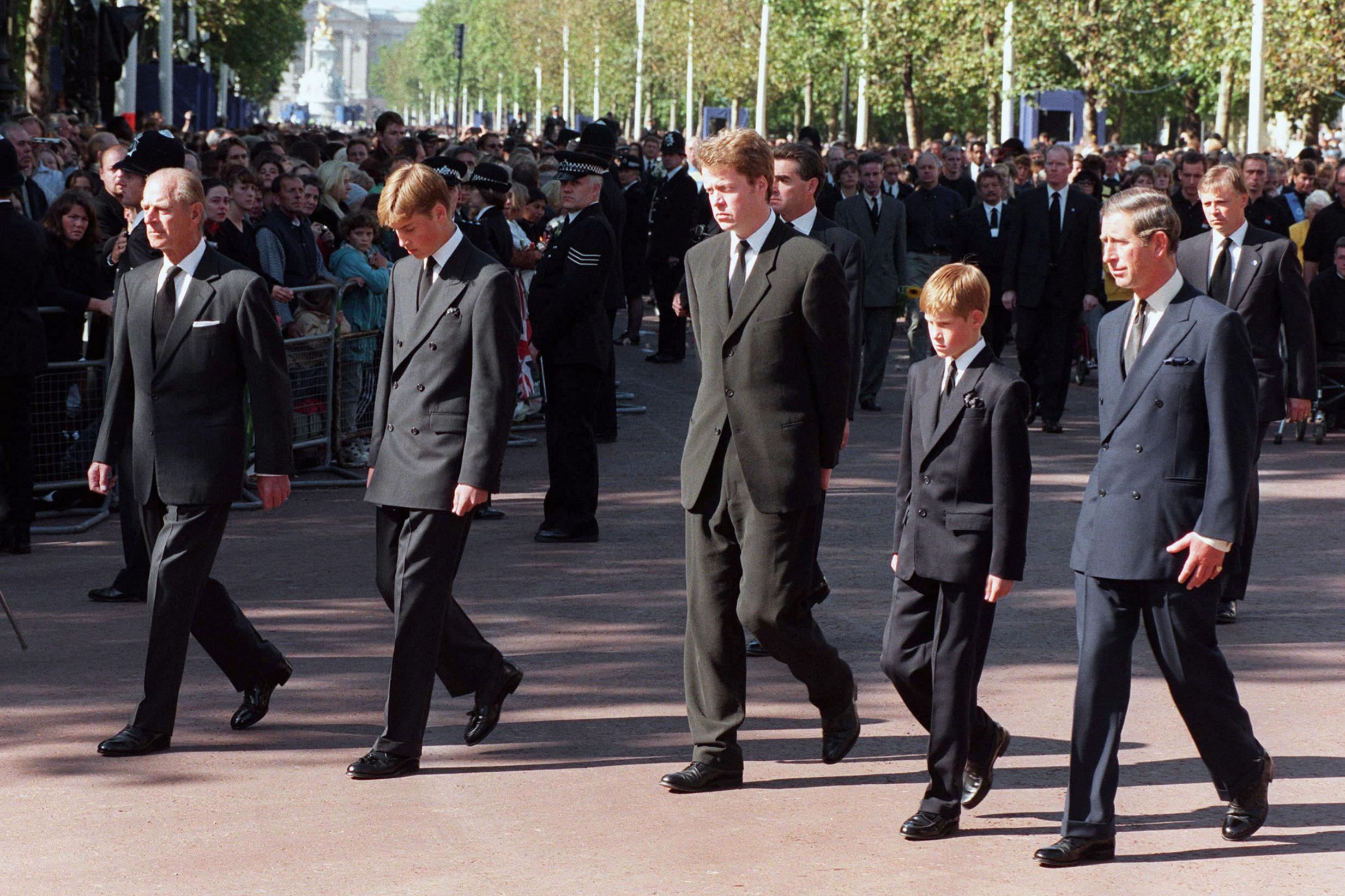
That week in 1997 Tony Blair and Elizabeth II fulfilled their constitutional duties. Both in their very different ways realised that elected politicians and hereditary monarchies are there by consent of the people, even if the people aren’t always logical, rational or reasonable. Even Earl Spencer’s speech, applauded as it was for its naked attack on the royal family – the wave of anger rising from the outside audience through Westminster Abbey to the very core of the Establishment, was more cathartic than catastrophic. The monarchy’s worst week since the abdication crisis of 1936 had at last passed. Even so, Diana evidently still haunts it.
Writing in The Independent on Sunday, 1 September 1997, little more than hours after the news, Polly Toynbee left behind one of the most prescient of the thousands of tributes to the life and death of the woman who fancied herself to be “queen of hearts”. Of the Windsors, she remarked:
“Whatever becomes of this stricken family, there, in the firmament above them will hover the problematic image of a woman whose power will not dim. Her story will be used and abused in a thousand ways, twisted and exaggerated, a constant weapon in the hands of enemies of Charles or Camilla.”
That is indeed the case 20 years on. Are we still mad then?
Join our commenting forum
Join thought-provoking conversations, follow other Independent readers and see their replies
Comments